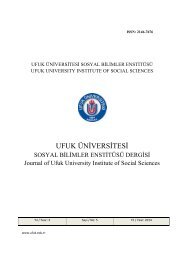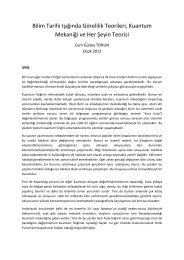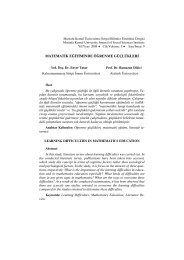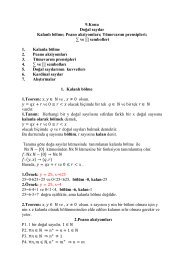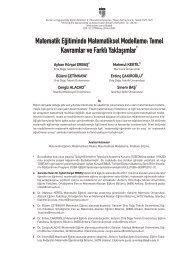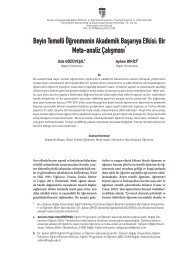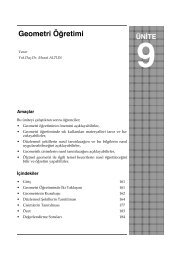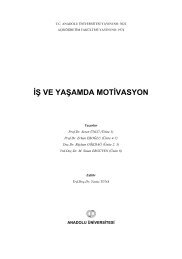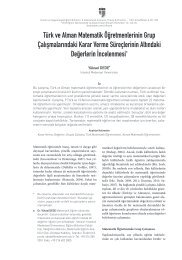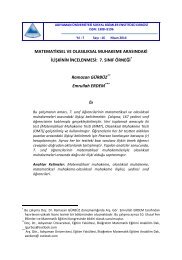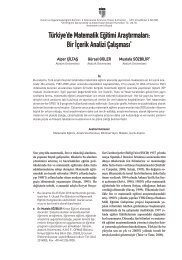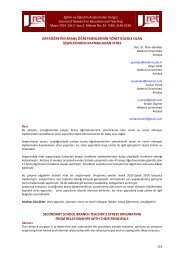NEWSLETTER
2015-12-98
2015-12-98
Create successful ePaper yourself
Turn your PDF publications into a flip-book with our unique Google optimized e-Paper software.
Feature<br />
Examples. n = 2, only 1 < 2 , the number = 1;<br />
<br />
n = 3, 1 < 3 > 2<br />
, the number = 2;<br />
2 < 3 > 1<br />
⎫<br />
n = 4, 1 < 3 > 2 < 4<br />
1 < 4 > 2 < 3⎪⎬<br />
2 < 3 > 1 < 4 , the number = 5;<br />
2 < 4 > 1 < 3⎪⎭<br />
3 < 4 > 1 < 2<br />
Find the number of snakes of length 10.<br />
50. Let s n denote the number of snakes of length n, so that<br />
s 1 = 1, s 2 = 1, s 3 = 2, s 4 = 5, s 5 = 16, s 6 = 61.<br />
Prove that the Taylor series for the tangent function is<br />
tan x = 1 x1<br />
1! + 2 x3 x5<br />
∞∑<br />
+ 16<br />
3! 5! + ···= x 2k−1<br />
s 2k−1<br />
(2k − 1)! .<br />
k=1<br />
51. Find the sum of the series<br />
1 + 1 x2<br />
2! + 5 x4 x6<br />
∞∑<br />
+ 61<br />
4! 6! + ···=<br />
52. For s > 1, prove the identity<br />
∞∏ 1<br />
∞∑ 1<br />
p=2 1 − 1 =<br />
n s .<br />
p s n+1<br />
x 2k<br />
s 2k<br />
k=0<br />
(2k)! .<br />
(The product is over all prime numbers p, and the summation<br />
over all natural numbers n.)<br />
53. Find the sum of the series<br />
1 + 1 4 + 1 ∞∑<br />
9 + ···= 1<br />
n . 2<br />
n=1<br />
(Prove that it is equal to π2<br />
6 , or approximately 3 2 .)<br />
54. Find the probability that the fraction p q<br />
is in lowest terms.<br />
This probability is defined as follows: in the disk p 2 +<br />
q 2 ≤ R 2 , we count the number N(R) of points with integer<br />
coordinates p and q not having a common divisor greater than<br />
1. Then we take the limit of the ratio N(R)/M(R), where M(R)<br />
is the total number of integer points in the disk (M ∼ πR 2 ).<br />
. ....... .<br />
.<br />
.<br />
.<br />
..<br />
• • • • • •<br />
• • • • • •<br />
• • • • • • • • • • • •<br />
• • • • • •<br />
• • • • • • • • • • • • • • N(10) = 192<br />
• • • • • • • • • • M(10) = 316<br />
• • • • • • • • • • • • N/M = 192/316<br />
• • • • • • • • • •<br />
• • • • • • • • • • • • • • • • • • • ≈ 0.6076<br />
• •<br />
.<br />
• • • • • • • • • • • • • • • • • • •<br />
• • • • • • • • • •<br />
• • • • • • • • • • • •<br />
• • • • • • • • • •<br />
• • • • • • • • • • • • • •<br />
• • • • • •<br />
• • • • • • • • • • • •<br />
• • • • • •<br />
• • • • • •<br />
55. The sequence of Fibonacci numbers was defined in Problem<br />
45. Find the limit of the ratio a n+1 /a n as n approaches<br />
infinity:<br />
a n+1<br />
= 2, 3 a n 2 , 5 3 , 8 5 , 13<br />
8 , 21<br />
13 , 34<br />
21 ,....<br />
√<br />
Answer: “The golden ratio”, 5+1<br />
2<br />
≈ 1.618.<br />
This is the ratio of the sides of a postcard which stays similar<br />
to itself if we snip off a square whose side is the smaller<br />
side of the postcard.<br />
How is the golden ratio related to a regular pentagon and<br />
a five-pointed star?<br />
56. Calculate the value of the infinite continued fraction<br />
1<br />
1<br />
1 +<br />
= a<br />
1<br />
0 +<br />
,<br />
1<br />
2 +<br />
a<br />
1<br />
1 +<br />
1<br />
1 +<br />
a<br />
1<br />
2 +<br />
2 +<br />
1 + 1 a 3 + 1<br />
. ..<br />
. ..<br />
where a 2k = 1, a 2k+1 = 2.<br />
That is, find the limit as n approaches infinity of<br />
1<br />
a 0 +<br />
.<br />
1<br />
a 1 +<br />
1<br />
a 2 +<br />
. ..<br />
+ 1 a n<br />
57. Find the polynomials y = cos 3(arccos x), y = cos 4<br />
(arccos x), y = cos n(arccos x), where |x| ≤1.<br />
58. Calculate the sum of the k th powers of the n complex n th<br />
roots of unity.<br />
59. On the (x, y)−plane, draw the curves defined parametrically:<br />
{x = cos 2t, y = sin 3t}, {x = t 3 − 3t, y = t 4 − 2t 2 }.<br />
60. Calculate (with an error of not more than 10 % of the<br />
answer)<br />
∫ 2π<br />
0<br />
sin 100 x dx.<br />
61. Calculate (with an error of not more than 10 % of the<br />
answer)<br />
∫ 10<br />
1<br />
x x dx.<br />
62. Find the area of a spherical triangle with angles (α, β, γ)<br />
on a sphere of radius 1. (The sides of such a triangle are great<br />
circles; that is, cross-sections of the sphere formed by planes<br />
passing through its center).<br />
Answer: S = α + β + γ − π. (For example, for a triangle with<br />
three right angles, S = π/2, that is, one-eighth of the total<br />
area of the sphere).<br />
18 EMS Newsletter December 2015




